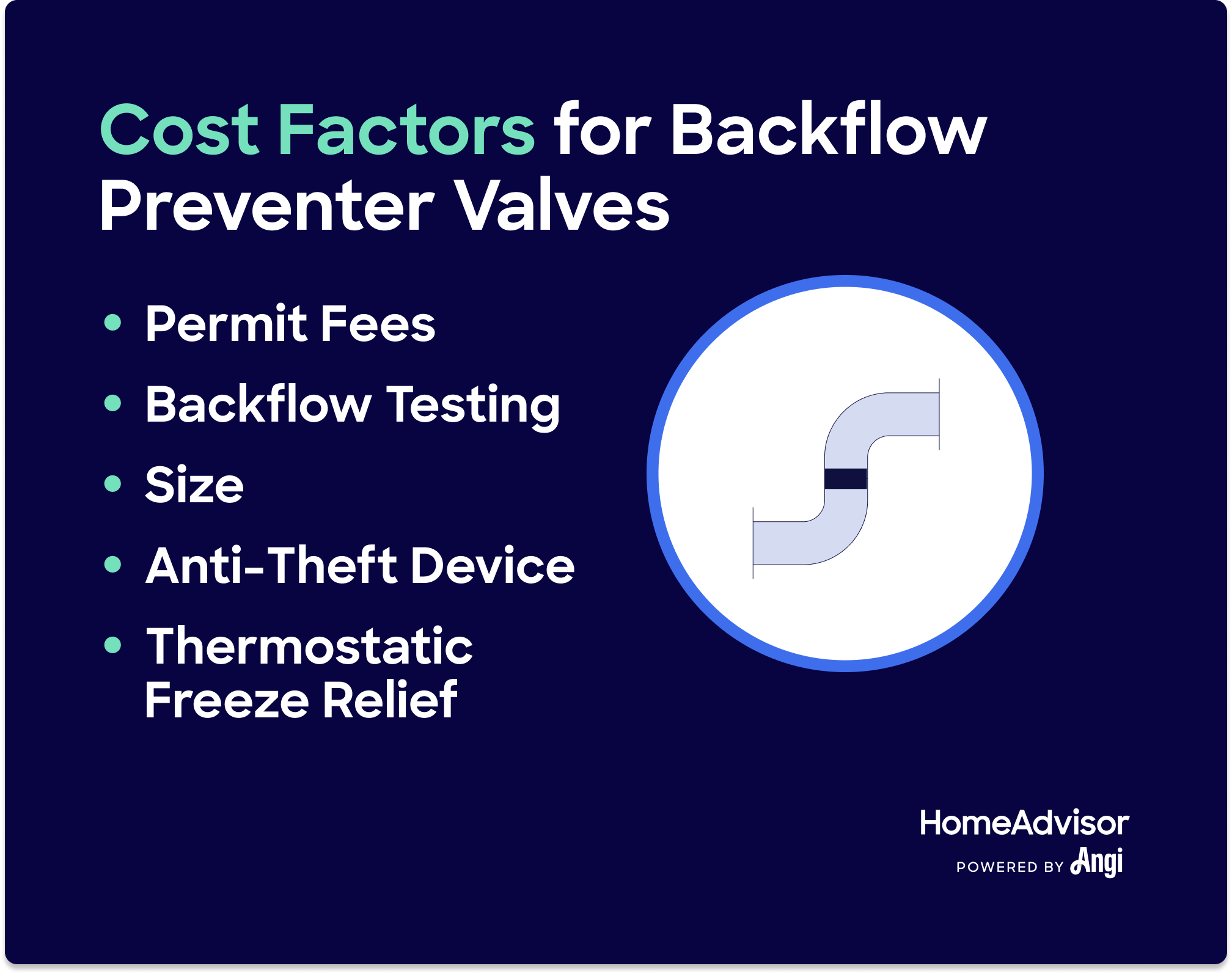How Much Does It Cost to Install a Backflow Preventer?
Typical Range:
$135 - $1,000
Typical Range:
$135 - $1,000
Cost data is based on research by HomeAdvisor.
Installing or replacing a backflow preventer costs $300 for the average homeowner. However, actual project costs fall somewhere between $135 and $1,000 based on the system sizes and styles you choose. Your project costs break down into materials and labor.
Backflow preventers keep dirty water from entering your home through your drain by blocking water from re-entering your pipes and contaminating your water. When on a sewer line, they allow water backflow to escape through a valve instead of into the home.
The average backflow preventer installation cost is $300. However, this can be as low as $135 to install simpler systems or as high as $1,200 for more complex units. Available in various models, backflow preventers cost $35 to $650 for the unit itself.
Installation represents a big chunk of your bill when adding a backflow preventer. Labor costs for this job fall between $100 and $400.
If you need existing piping retrofitted, the labor can cost between $150 and $400. If your town or county requires a permit for this project, factor in at least another $50 in permit fees.
| Type of Backflow Preventer | Cost |
|---|---|
| Garden Hose or Appliance | $3 – $100 |
| Sprinkler or Sewer System | $100 – $600 |
| Basement or Floor Drain | $150 – $250 |
Small backflow preventers like those designed to fit on a garden hose or appliance cost between $3 and $100. The lower-cost versions fit onto the end of a garden hose to keep water flowing in one direction and prevent dirt from contaminating the water supply. These models usually run between $3 and $35.
Backflow preventers for appliances like power washers are slightly larger and must be installed downstream of a residential water meter. The larger versions run between $10 and $100.
Backflow preventers for sprinkler or sewer systems typically cost anywhere from $100 to $600. Larger and more complex than backflow preventers for hoses and appliances, these models are installed on a main sewer pipe and have several valves and chambers to allow air to enter the pipe to prevent backflow (atmostpheric models) or valves that block backflow when water pressure drops (reduced-pressure models).
Preventing backflow in harder-to-reach areas of your home—such as a basement— can increase costs significantly, usually between $150 and $250. Accessing buried pipes is no simple matter and can bump the costs as high as $1,000 for backflow preventers in basement floor drains.
Permitting fees for backflow preventers usually cost around $50. However, the amount may vary by state and municipality. You’ll need to contact your local municipalities for direction, as not all places require permits for this project.
Backflow testing typically costs $70 to $90, but can cost as much as $350 depending on where you live. Some cities require annual testing and inspections. They may send someone to test your system for a fee or require you to hire a private company.
Thermostatic freeze relief valves cost of about $100 on average. Backflow preventers can stop working or even fracture in extremely cold temperatures. These valves are installed directly on exposed pipes during the winter to automatically decompress the pipeline with cold water pressure.
Anti-theft devices like steel cages or a steel lock typically cost between $200 and $300. Ornery strangers target backflow preventers for their copper and brass elements, and since they are easier to access than indoor piping, many homeowners choose to safeguard their systems.
With adequate plumbing experience, you can install a drain valve yourself with little fuss. However, the complexity level skyrockets if you install a more sophisticated system.
Still, you’ll need to select the right system and valve for your pipes or drains. There’s also a chance you’ll need to retrofit piping if your system can't fit a backwater preventer as-is. Consult a local plumbing pro is the best option if you’re not confident you can complete a leak-free installation.
Hired plumbers will fit the right preventer system, eliminating potential moisture, mold, or flooding issues. If you suspect you need a repair, replacement, or installation, ease your mind by bringing in a pro for a backwater preventer inspection.
DIY is an option, but only if you understand your home's piping. Hiring a licensed plumber for this job is affordable, and might be the better option if you want a job done fast and right.
The answer varies by town and municipality. Always look up local permit requirements before beginning this project on your own. You could be on the hook for repair costs if your home experiences leaking due to a faulty backflow preventer DIY installation. The professionals you hire will source their own permits before starting the project.
If your backflow preventer fails, you will see dirty water coming back up your drains or leaking a significant amount of water at the backflow site.
Most residential properties do not require a backflow preventer. However, your municipality may require one if you live on a property with an irrigation system. Commercial properties are generally required to have backflow preventers.
A backflow preventer is a valve system that stops the water in your main water supply from creating a reverse flow in the wrong direction. A backwater valve prevents sewer backup.

